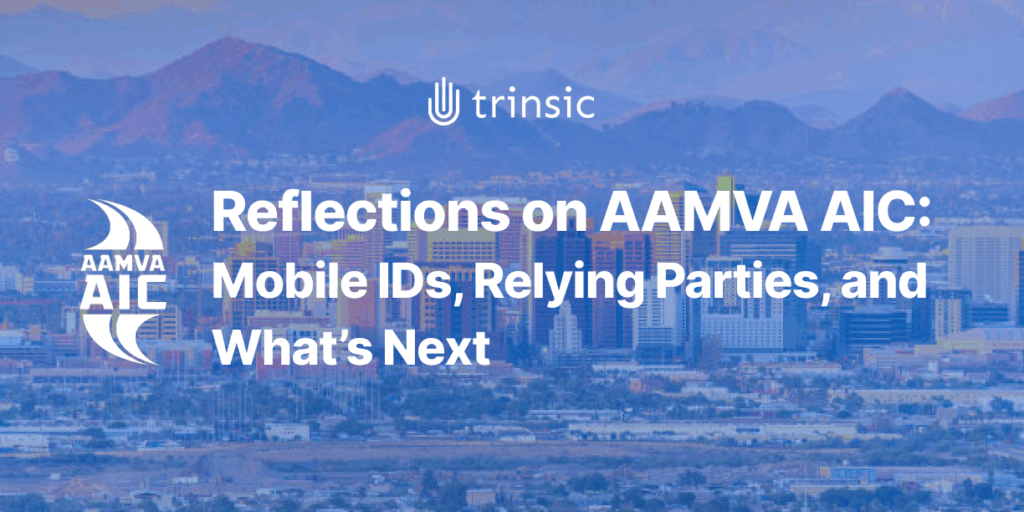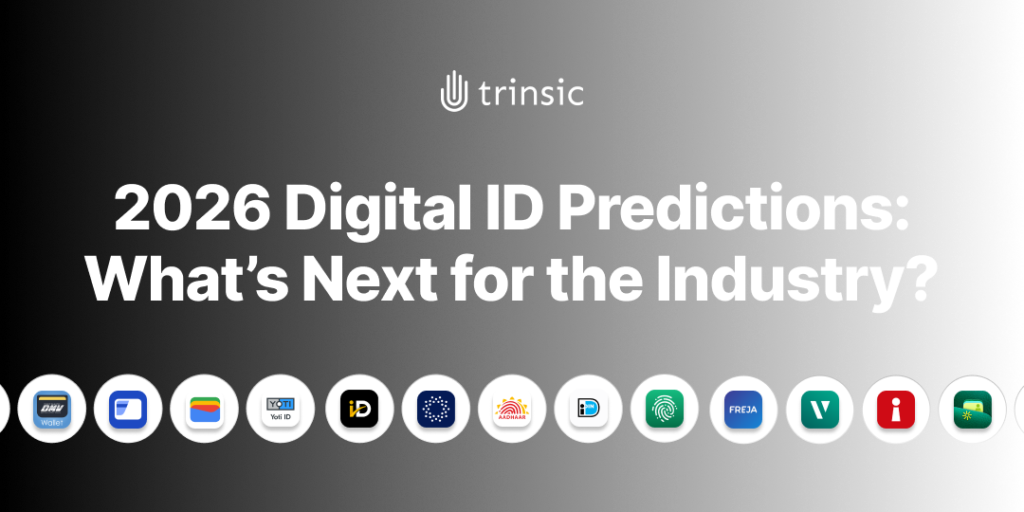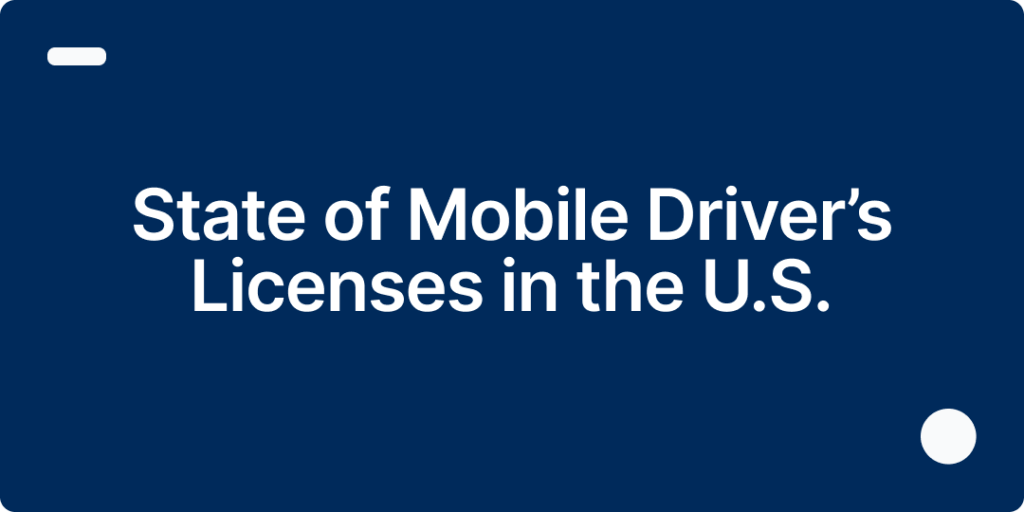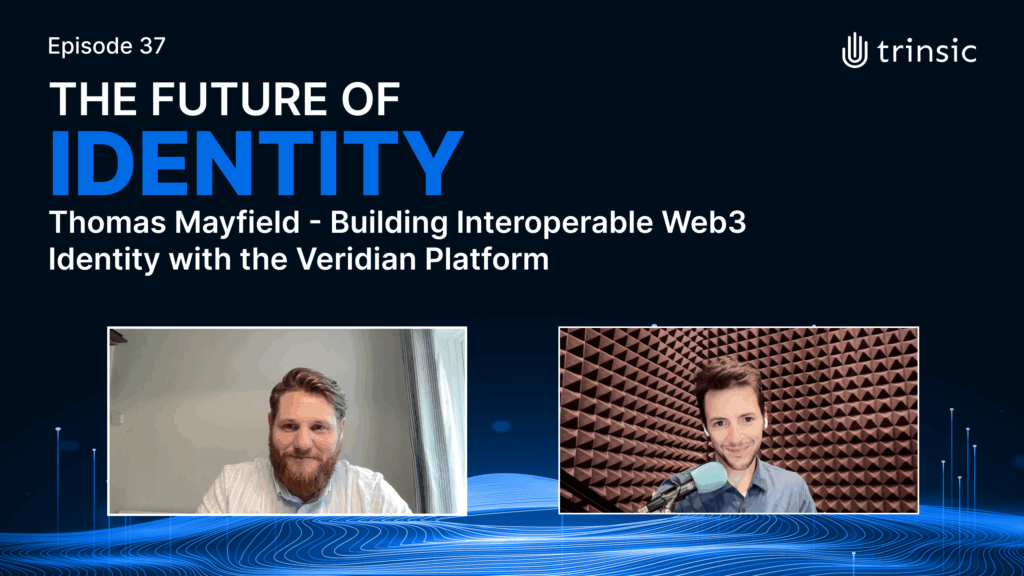Last month we attended the American Association of Motor Vehicle Administrators (AAMVA) Annual International Conference in Arizona. The official programming was focused on DMV operations like vehicle titles, employee onboarding, and law enforcement, which is not where Trinsic spends most of its time. For us, the real value came from being in the same place as so many of the companies driving mobile driver’s license (mDL) adoption.
Momentum in the mDL Space
Over the four days we heard from and talked to mDL wallet providers like Google, Apple, Samsung, IDEMIA, Thales, GET Mobile, GoValidate, and the Canadian Bank Note Company (CBN). During the Relying Party Showcase, many wallet providers presented about their capabilities and partners. Google mentioned partnerships with Amazon, Railcard, Bumble, Uber and MyChart across use cases like account recovery, age verification and travel. Apple showcased their verification offering and shared partnerships with Chime, Uber Eats, US Bank and Turo. All of these use cases are in additional to the abundance of in-person demos we saw from companies like Credence ID who are going live with major sports venues in the NBA, MLB and PGA Tour. These presentations confirmed the momentum we are seeing in the mDL ecosystem.
Showcasing Real-World Use Cases with Indeed
One of the highlights of the week was presenting alongside Indeed, the world’s largest hiring marketplace. Together we showed a proof of concept where a job seeker could verify their identity with an mDL before applying to a role.
The demo featured verifications from the California DMV Wallet, Google Wallet using the new Digital Credentials API and from the Samsung Wallet. Results showed that mDL verification was faster than a document upload, down to as little as nine seconds compared to 45 seconds with a physical ID. For employers, this kind of verification strengthens trust in candidate profiles while making the process easier for applicants. It was an important example of how mDLs can deliver value to both sides of the hiring equation.
The Relying Party Challenge
One of the most common refrains we hear from relying parties is that the adoption of mDLs in the US is still fairly low, so it’s hard to prioritize the time and effort it takes to successfully integrate. At Trinsic we’re making it easier for relying parties to start accepting mDLs without needing to spend weeks learning and implementing a new standard. Once we see more businesses accepting mobile IDs for remote verification, more users will become aware of the benefits and user adoption will start to grow.
Looking Ahead
Even with these gaps, AAMVA remains one of the few places where all the major players in the mDL ecosystem gather in person. Next year it would be great to see the RP showcase show even more use cases and acceptance stories. While some early adopters like Uber and Indeed were present, there are dozens more potential relying parties who could start accepting mobile driver’s licenses in the next twelve months.
For us, the week reinforced that momentum is building. The path to scaling adoption will come down to getting technology providers, DMVs, and relying parties aligned. That is the work we are excited to keep driving forward.
Join Our Next Webinar
Want to dig deeper into the current state of mDL adoption and where it’s headed next? Join us for our upcoming webinar on October 9th, where we’ll share the latest data on adoption, highlight new use cases, and provide practical guidance for relying parties that want to get started.








